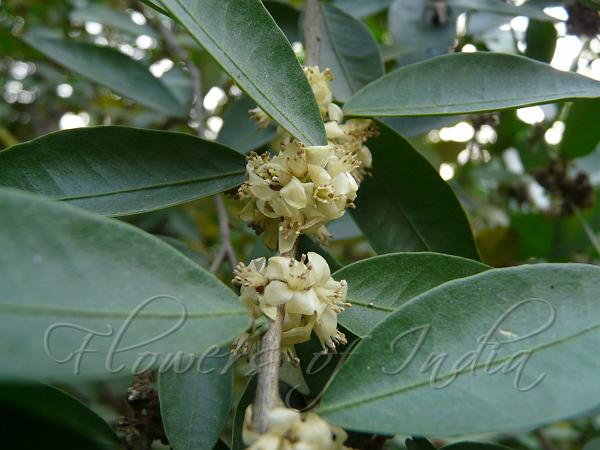|
| Indian Atalantia |
|

|

| File size | 2408332 |
| Original date | 11/7/10 4:47 PM |
| Resolution | 2560 x 1920 |
| Flash | Flash did not fire, auto |
| Focal length | 4.6mm |
| Exposure time | 1/30s |
| Aperture | 2.8 |
| Focus Distance | |
| Metering Mode | Multi-segment |
| Camera make | Panasonic |
| Camera model | DMC-FZ18 |
| Sensor type | OneChipColorArea |
|
|
|
|
Photo: |
Botanical name: Atalantia monophylla Family: Rutaceae (Citrus family)
Synonyms: Atalantia floribunda, Atalantia malabarica, Limonia spinosa
Synonyms: Atalantia floribunda, Atalantia malabarica, Limonia spinosa
Indian Atalantia is a small, much-branched tree with
rounded twigs usually slightly hairy at first, becoming hairless, with
single, stout, sharp spines, 1-1.5 or 2 cm long, or unarmed. Leaves are
bright green above, paler and reticulate-veined below,
ovate-lanceshaped or elliptical, variable in size, 3-15 X 2-4 cm
(usually 4-8 X 2.5-3.5 cm), margins entire or slightly wavy, tips
obtusely rounded, often notched, bases broadly wedge-shaped, jointed
with the wingless petioles that are 5-10 mm long and 1.5-2 mm wide.
Veins are strongly marked on the under surface, 10-14 on each side,
branched, forming a network of veins and also forked near the margins.
Flowers are long-stalked in short racemes or clusters in the axils of
the leaves, with stalks 0.6-1.5 cm long, finely pubescent or glabrous,
merging into the calyx. Sepal cup is more or less irregularly and
deeply 2-cleft. Flowers have parts in 4s or 5s, petals white, hairless,
bluntly rounded at the tip, 0.8-1 cm long. Stamens are 8-10, united
into a tube 6-8 mm long with the anthers borne on the free tips of the
filaments. Pistil is slender, 6-7 X 1 mm, ending in an abruptly
expanded, 3-4-lobed stigma, 1.2-1.5 mm diam.; style caducous; fruits
globose, 1.5-2 cm diam., yellowish-green when ripe. Indian Atalantia
is native to Andaman Is., Bangladesh, Cambodia, India, Laos, Malaya,
Myanmar, Nicobar Is., Sri Lanka, Thailand, Vietnam.
Medicinal uses: A 'warm' oil obtained from the
fruit is used in the treatment of chronic rheumatism. This almost
certainly is an essential oil. An oil of a pleasant odour is obtained
from the fruit and used in the treatment of chronic rheumatism.
A 'warm' oil obtained from the
fruit is used in the treatment of chronic rheumatism. This almost
certainly is an essential oil. An oil of a pleasant odour is obtained
from the fruit and used in the treatment of chronic rheumatism.
Medicinal uses:
 A 'warm' oil obtained from the
fruit is used in the treatment of chronic rheumatism. This almost
certainly is an essential oil. An oil of a pleasant odour is obtained
from the fruit and used in the treatment of chronic rheumatism.
A 'warm' oil obtained from the
fruit is used in the treatment of chronic rheumatism. This almost
certainly is an essential oil. An oil of a pleasant odour is obtained
from the fruit and used in the treatment of chronic rheumatism. | Identification credit: Tabish | Photographed in Lodhi Garden, Delhi & Lalbagh, Bangalore. |
• Is this flower misidentified? If yes,